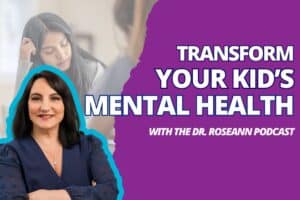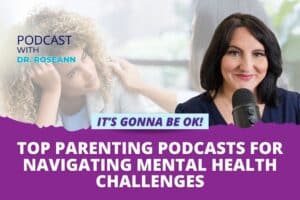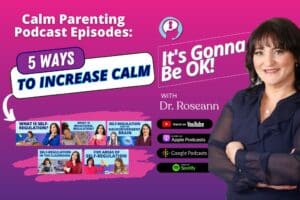Obsessive-Compulsive Disorder (OCD) is a mental health condition that affects millions of people worldwide, and among its various subtypes, checking OCD is a prevalent and challenging form. But what is Checking OCD?
Checking OCD is characterized by persistent, intrusive thoughts leading individuals to engage in repetitive checking compulsions. A study suggests that repeating certain actions, like checking things over and over, can affect how people remember things, which helps us better understand OCD (Radomsky et al., 2014).
This is why children and teens with this subtype often find themselves compelled to check things multiple times, such as ensuring the front door locks and electrical appliance switches are working.
Causes and Risk Factors
Checking OCD is influenced by a combination of biological, genetic, and environmental factors. Biological factors, including neurotransmitter imbalances, have been implicated in the development of OCD symptoms, while brain imaging studies highlight alterations in brain circuitry.
Genetic predisposition is evident, with family history studies indicating a higher likelihood of developing certain forms of OCD in individuals with relatives experiencing similar symptoms. Environmental triggers, particularly stress and trauma, contribute to the onset or exacerbation of checking OCD, as heightened stress levels often lead to intrusive thoughts and compulsive urges to check.
This disorder's relationship with anxiety disorders, characterized by fear-based obsessions, highlights the complex interplay of symptoms in people with Checking OCD. Additionally, a subset of cases may be associated with pediatric autoimmune neuropsychiatric disorders linked to streptococcal infections (PANDAS). This emphasizes the importance of exploring both physical and psychological factors in understanding and treating this OCD type.
Recognizing Checking OCD Symptoms
Identifying checking OCD involves recognizing obsessive thoughts and the excessive need to perform a certain checking behavior. A common example includes individuals checking and re-checking if they lock the door and turn off light switches, or leaving the house only to return to ensure everything is in order.
Other symptoms of OCD include:
Obsessive Thoughts
- Doubt: Persistent doubts about whether a task was completed correctly or if a potential danger exists.
- Fear of Harm: Intrusive thoughts about harm befalling oneself or others due to negligence (e.g., leaving doors unlocked).
- Impending Disaster: Constant anticipation of a catastrophic event linked to a failure to perform a specific checking ritual.
- Unpleasant Thought Image: Disturbing mental images of undesirable outcomes resulting from a failure to check.
Compulsive Behaviors
- Repetitive Checking: Engaging in checking behaviors such as verifying locks, switches, or appliances multiple times.
- Avoidance: Avoiding situations or activities that trigger unwanted thoughts to prevent the need for checking.
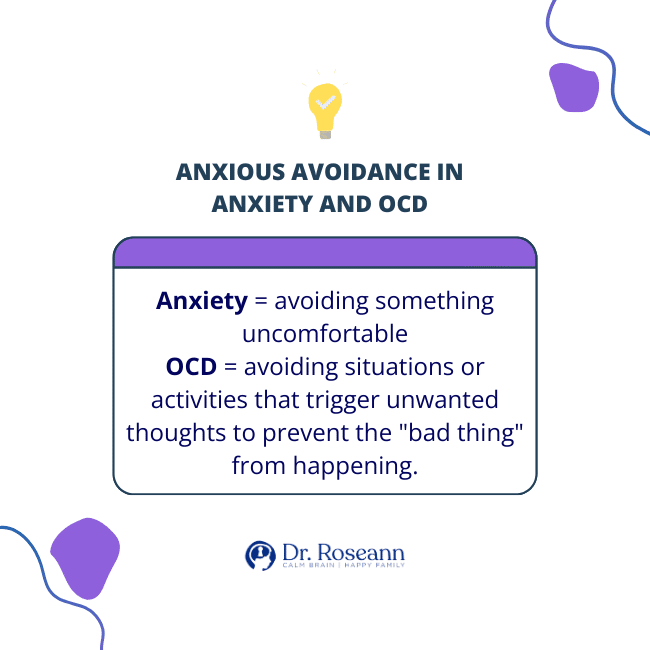
- Time-Consuming Compulsive Rituals: Spending a significant amount of time each day performing checking rituals.
- Interference with Daily Life: Impairment in work, relationships, or daily functioning due to the time-consuming nature of compulsive checking.
- Sense of Urgency: Feeling compelled to check immediately in response to obsessive thoughts to alleviate anxiety.
- Inability to Resist Checking: Difficulty resisting the urge to perform checking rituals despite recognizing their irrationality.
Coping Strategies and OCD
The most effective treatment for checking OCD often involves a combination of Cognitive Behavioral Therapy (CBT) and Exposure and Response Prevention (ERP). CBT helps individuals identify and change unhealthy thought patterns, while ERP specifically targets compulsive behaviors, breaking the cycle of anxiety and relief (Radomsky et al., 2010).
Coping with checking OCD requires a holistic approach. Mindfulness and relaxation techniques can help manage anxiety while building a strong support system provides emotional reinforcement during challenging times. Lifestyle changes aimed at stress reduction contribute to overall well-being.
Addressing setbacks is an integral part of the recovery process. It involves learning from experiences, maintaining treatment progress, and celebrating small victories. Overcoming checking OCD is a journey, and resilience is key to long-term success.
Real-life accounts from OCD sufferers provide insights into the daily struggles, lessons learned, and effective coping strategies. Sharing experiences fosters understanding and encourages those facing similar challenges.
- Gradual Exposure and Response Prevention: This involves gradually exposing oneself to the fear of not checking and resisting the urge to perform the compulsion. Starting with less anxiety-provoking situations and slowly working up to more challenging ones can desensitize the individual to the anxiety.
- Habit Reversal Training: This strategy involves identifying triggers for compulsive checking and developing a competing response or action to perform when the urge arises.
- Developing Structured Routines: Creating a structured daily routine can reduce the time and mental space available for compulsive behaviors. This might include designated times for specific activities, thereby limiting the opportunities for compulsive checking.
- Limiting Checking: Intentionally setting limits on the number of times or the duration of checking can help in gradually reducing the compulsion. Using timers or alarms can assist in adhering to these limits.
- Utilizing Delay Tactics: Delaying the response to the urge to check by a few minutes can help in gradually increasing control over the behavior. This interval can be progressively increased over time.
- Recording and Monitoring: Keeping a journal to track compulsive behaviors and triggers can provide insights into patterns and progress. This can also be a tool for discussion in therapy sessions.
- Setting Realistic Goals and Addressing Setbacks: Approaching recovery with manageable goals and a constructive attitude towards setbacks is essential for long-term success.
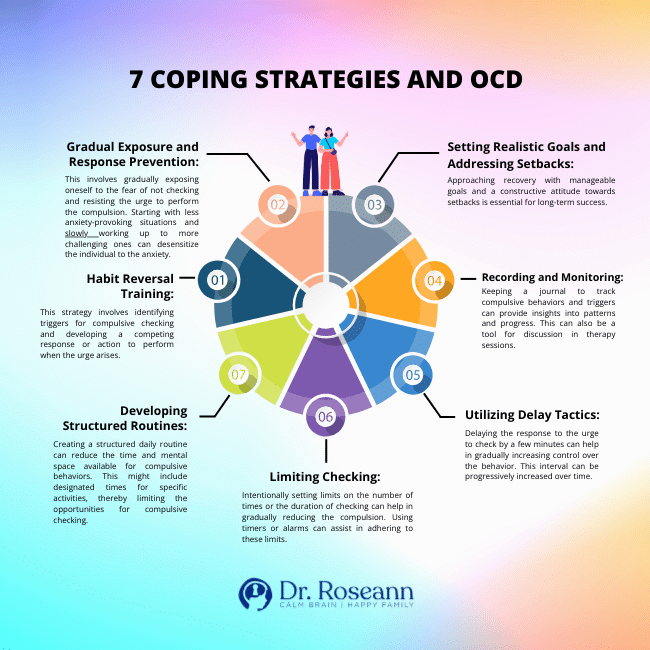
Seeking Professional Help for Checking Compulsions
Diagnosis and professional evaluation from a qualified healthcare provider are crucial for those dealing with checking OCD. Finding a qualified mental health professional, participating in support groups, and accessing resources contribute to a comprehensive treatment plan.
Long-term management of checking OCD involves building resilience, preventing relapse, and empowering individuals to lead fulfilling lives beyond the constraints of OCD. The journey to recovery is unique for each person, emphasizing the importance of personalized treatment plans.
Checking OCD is a challenging subtype of obsessive compulsive disorder that significantly impacts daily life. By understanding its symptoms, causes, and treatment options, individuals can take the first step toward recovery.
Seeking professional help, building a support system, and implementing coping strategies are crucial elements in overcoming checking OCD and regaining control over one's life. Remember, recovery is possible, and there is hope beyond the cycle of obsessive thoughts and compulsive behaviors.
Parent Action Steps
☐ Learn about the symptoms and characteristics of the different types of OCD.
☐ Pay attention to repetitive behaviors and intrusive thoughts
☐ Help your child build a strong support system with family members, friends, and support groups.
☐ Encourage your child to take ownership of the treatment and recovery of their compulsive behavior.
☐ Take the OCD Quiz to know the treatment options for your child.
☐ Use the Solutions Matcher for personalized solutions and OCD treatment.
Dr. Roseann is a mental health expert who frequently is in the media:
- Insider: What is OCD?
- What to Expect: Why Does My Toddler Keep Pulling Her Own Hair?
- Parade: Why Does My Toddler Keep Pulling Her Own Hair?
- Single Care Controlling the uncontrollable: Living with OCD during a pandemic
- MomsCove How to Help a Child with Anxiety and OCD
- Holistic Counseling Podcast: Effective Treatments for OCD
- Epidemic Answers: Neurofeedback for ADHD, anxiety, OCD and mood
- Cai Grahm: Is it anxiety or OCD?
- BCIA: Calming the OCD Brain with Neurofeedback and ERP Therapy
- Hope for Anxiety and OCD: Sudden Onset OCD
- Integrative Practitioner: Integrative Approaches to Treating OCD
- HappiHuman: Is it an Eating Disorder or OCD
Citations
Abramowitz, J. S., Whiteside, S., Kalsy, S. A., & Tolin, D. F. (2003). Thought control strategies in obsessive-compulsive disorder: a replication and extension. Behaviour research and therapy, 41(5), 529–540. https://doi.org/10.1016/s0005-7967(02)00026-8
Radomsky, A. S., Dugas, M. J., Alcolado, G. M., & Lavoie, S. L. (2014). When more is less: Doubt, repetition, memory, metamemory, and compulsive checking in OCD. Behaviour Research and Therapy, 59, 30–39. https://doi.org/10.1016/j.brat.2014.05.008
Radomsky, A. S., Shafran, R., Coughtrey, A. E., & Rachman, S. (2010). Cognitive-Behavior Therapy for Compulsive Checking in OCD. Cognitive and Behavioral Practice, 17(2), 119–131. https://doi.org/10.1016/j.cbpra.2009.10.002
Are you looking for SOLUTIONS for your struggling child or teen?
Dr. Roseann and her team are all about science-backed solutions, so you are in the right place!
Grab your complimentary copy of
147 Therapist-Endorsed Self-Regulation Strategies for Children: A Practical Guide for Parents
You can get her books for parents and professionals, including: It’s Gonna Be OK™: Proven Ways to Improve Your Child’s Mental Health, Teletherapy Toolkit™ and Brain Under Attack: A Resource For Parents and Caregivers of Children With PANS, PANDAS, and Autoimmune Encephalopathy.
If you are a business or organization that needs proactive guidance to support employee mental health or an organization looking for a brand representative, check out Dr. Roseann’s professional speaking page to see how we can work together.
Dr. Roseann is a Children’s Mental Health Expert and Licensed Therapist who has been featured in/on hundreds of media outlets including The Mel Robbins Show, CBS, NBC, PIX11 NYC, Today, FORBES, CNN, The New York Times, The Washington Post, Business Insider, Women’s Day, Healthline, CNET, Parade Magazine and PARENTS. FORBES called her, “A thought leader in children’s mental health.”

She coined the terms, “Re-entry panic syndrome” and “eco-anxiety” and is a frequent contributor to media on mental health.
Dr. Roseann Capanna-Hodge has three decades of experience in working with children, teens and their families with attention-deficit hyperactivity disorder (ADHD), autism, concussion, dyslexia and learning disability, anxiety, Obsessive Compulsive Disorder (OCD), depression and mood disorder, Lyme Disease, and PANS/PANDAS using science-backed natural mental health solutions such as supplements, magnesium, nutrition, QEEG Brain maps, neurofeedback, PEMF, psychotherapy and other non-medication approaches.
She is the author of three bestselling books, It’s Gonna Be OK!: Proven Ways to Improve Your Child's Mental Health, The Teletherapy Toolkit, and Brain Under Attack. Dr. Roseann is known for offering a message of hope through science-endorsed methods that promote a calm brain.
Her trademarked BrainBehaviorResetⓇ Program and It’s Gonna be OK!Ⓡ Podcast has been a cornerstone for thousands of parents facing mental health, behavioral or neurodevelopmental challenges.
She is the founder and director of The Global Institute of Children’s Mental Health, Neurotastic™Brain Formulas and Dr. Roseann Capanna-Hodge, LLC. Dr. Roseann is a Board Certified Neurofeedback (BCN) Practitioner, a Board Member of the Northeast Region Biofeedback Society (NRBS), Certified Integrative Mental Health Professional (CIMHP) and an Amen Clinic Certified Brain Health Coach. She is also a member of The International Lyme Disease and Associated Disease Society (ILADS), The American Psychological Association (APA), Anxiety and Depression Association of America (ADAA) National Association of School Psychologists (NASP), International OCD Foundation (IOCDF).
© Roseann-Capanna-Hodge, LLC 2023



